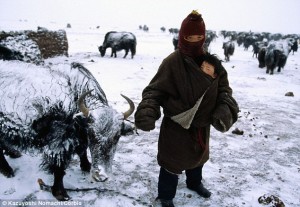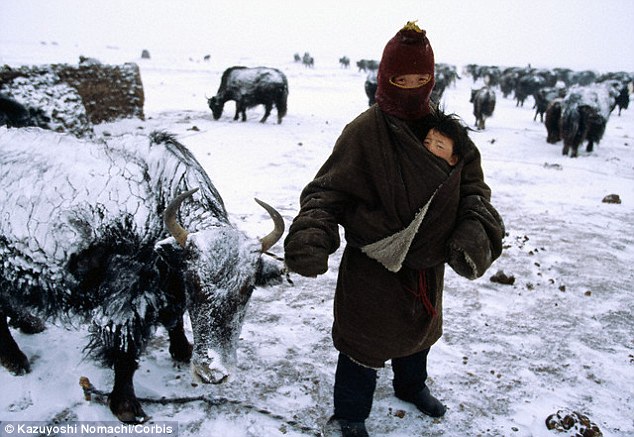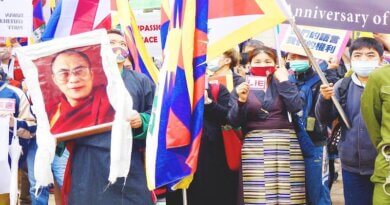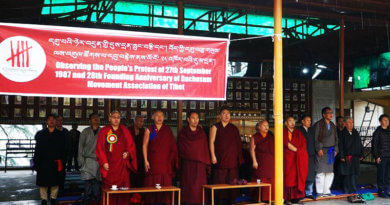Here’s why the Chinese may never be able to fully populate Tibet
by Susanna Pilny
 Depending on who you ask, anywhere from a few hundred thousand to upwards of seven million Han (ethnically Chinese) have immigrated into Tibet Autonomous Region since it was invaded by China in 1950—but according to an international team of researchers, these Han are having a hard time reproducing in the high altitudes there.
Depending on who you ask, anywhere from a few hundred thousand to upwards of seven million Han (ethnically Chinese) have immigrated into Tibet Autonomous Region since it was invaded by China in 1950—but according to an international team of researchers, these Han are having a hard time reproducing in the high altitudes there.
The issues surrounding Tibet and China are, of course, complicated. In regards to the 1950 invasion, the Chinese government claimed (among many other things) that since Tibet was part of the Qing dynasty in the 1600s, it was merely quelling a rebellious province, as well as liberating it from a feudal form of government. Tibetans generally claim that they were an independent nation, and that they were and still are undergoing cultural genocide at the hands of the Chinese government.
Given that there are hundreds (if not thousands) of years of history here, this is a vast oversimplification of the issue. Yet, in the midst of all the contention, one thing is clear: The Tibetans seems to be better at reproducing at higher altitudes than the Han, and Han women and infants are suffering because of it.
Which is where Dr. Lorna Moore, a researcher from the University of Colorado, Denver who specializes in the effects of altitude on pregnancy and birth, steps in. She and other colleagues have studied the difference between the reproduction of Han and Tibetans at high altitudes for years, and have found some very interesting results.
“[The Tibetans] have higher birth weights because the babies are growing more normally in utero,” Moore explained. “We think that’s a result of having greater blood flow to the uterine circulation. And babies who are more normal-sized at birth have a greater chance of survival postnatally.”
One of Moore’s more important papers on this subject, which can be found in American Journal of Human Biology, studied 452 babies delivered to Han and Tibetan parents living between the altitudes of 8,900 and 15,400 feet in the Tibet Autonomous Region. At birth, the babies’ weight, sex, and gestational age were recorded.
Later, the ethnicities of the parents were documented, with 377 births to Tibetan parents and 75 to two Han parents or one Han and one parent of various heritage (either Tibetan, Mei, Moinba, or mixed Tibetan-Han). Of the latter, 65 babies were born to two Han parents.
The health conditions of the parents, along with their previous pregnancies (there were 863) and births (734), were recorded as well—from which they calculated prenatal and postnatal mortality rates separate from those of the 452 babies delivered at the time of the study.
High Han?
Interestingly, the study discovered that not a single Han birth happened above 12,500 feet, whereas Tibetan births happened at all altitudes. In fact, most Han who lived above that altitude descended to lower altitudes during the pregnancy, where they stayed for several years. Reasons cited for the move included health—like increased risk of pre-eclampsia—and family, such as a desire to be closer to family in China. The families typically returned to the high altitude when the child was three or four years old, said Moore.
Incidentally, the incidence of pre-eclampsia is usually triple at high altitudes for most populations who haven’t spent thousands of years at such an elevation, but it’s unclear if this trend holds true for the Han due to a lack of data.
“The difficulty is, there are not systematic medical records that are maintained or have been evaluated,” explained Moore by phone. “So there’s no way of knowing what the denominator is. It’s known that there are cases of pre-eclampsia, but you can’t calculate an incidence.”
Han health hazards
Besides where the births were located and possible maternal health risks, the study found that birth weight for both populations was affected by altitude as well; it decreased as altitude increased. However, the magnitude of the decrease was drastically different between the two.
“The Tibetan birth weights are similar to sea level values,” said Dr. Moore. “Whereas the Han birthweights are much lower.”
In fact, the birth weight of Han infants declined 66 percent more than that of children born to Tibetan parents. The Tibetan children weighed an average of 310 grams (or around 2/3 of a pound) more than Han babies between 8,900 and 9,800 feet, and a whopping 530 grams (roughly 1 and 1/8 pounds) more between 9,800 and 12,500 feet.
Further, the study found that prenatal and postnatal mortality was greater in the Han than in the Tibetans across all altitudes.
Tibetan blood is better
As to why these groups differ so drastically, the difference is primarily due to the incidence of intrauterine growth restriction (IUGR)—or a decreased growth rate of the baby inside the womb. IUGR itself is a result of genetics, as it appears that certain genes allow greater uterine blood flow and arterial oxygenation than normal at higher altitudes.
This notion was strengthened by one of Moore’s studies from this year, which is published in Pulmonary Circulation. When her team studied 30 Tibetan and Han infants born around 12,000 feet, the arterial oxygen saturation (SaO2) in the Tibetan infants was higher while awake or asleep. Whereas the Tibetan SaO2 values remained at 85 percent or above, the Han values fell below 70 percent.
As to what genes cause this difference, scientists have a few ideas. Indeed, according another of Dr. Moore’s papers, which is published in Physiological Genomics, the researchers identified 14 candidate regions of the Tibetan genome that may play a role in high-altitude birth adaptations.
Another paper published in Nature by separate researchers determined that Tibetans have a variant of a gene known as EPAS1, which regulates their levels of oxygen-toting hemoglobin. Their particular version of the gene apparently came from Denisovan ancestors—an extinct species of human that somewhat rarely interbred with Homo sapiens.
A small number of Han (perhaps one percent of the population) carry this rare variant of EPAS1, and it’s not likely to be the only gene at play that help the Tibetans alone survive the altitude—leading to intrauterine growth restriction in Han mothers. And it’s not likely they will be able to generate these genes any times soon, unless they have children with Tibetans.
“Any sort of natural selection processes that operated with the Tibetans would presumably operate with the Han, but we’re talking thousands of years,” said Moore.
“The only data that bears on that is in South America. Our studies (and others) have shown that the European-derived populations, despite having been there [at high altitudes in Bolivia] for 400 years, are still showing lower birth weights…In our Bolivian studies, where some of the European women in our sample had multiple generations of high-altitude ancestry, that number of generations didn’t seem to make any difference.”





